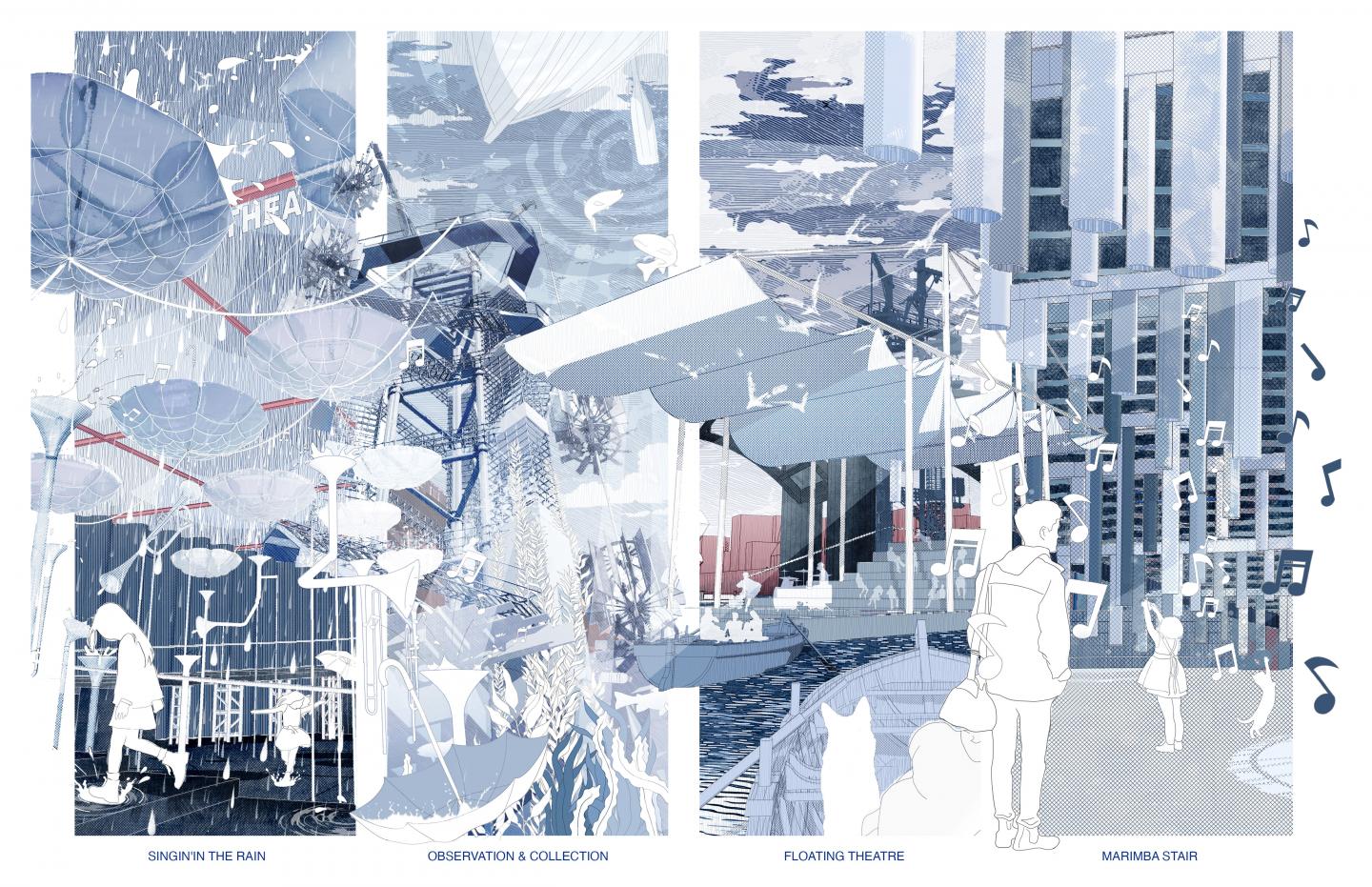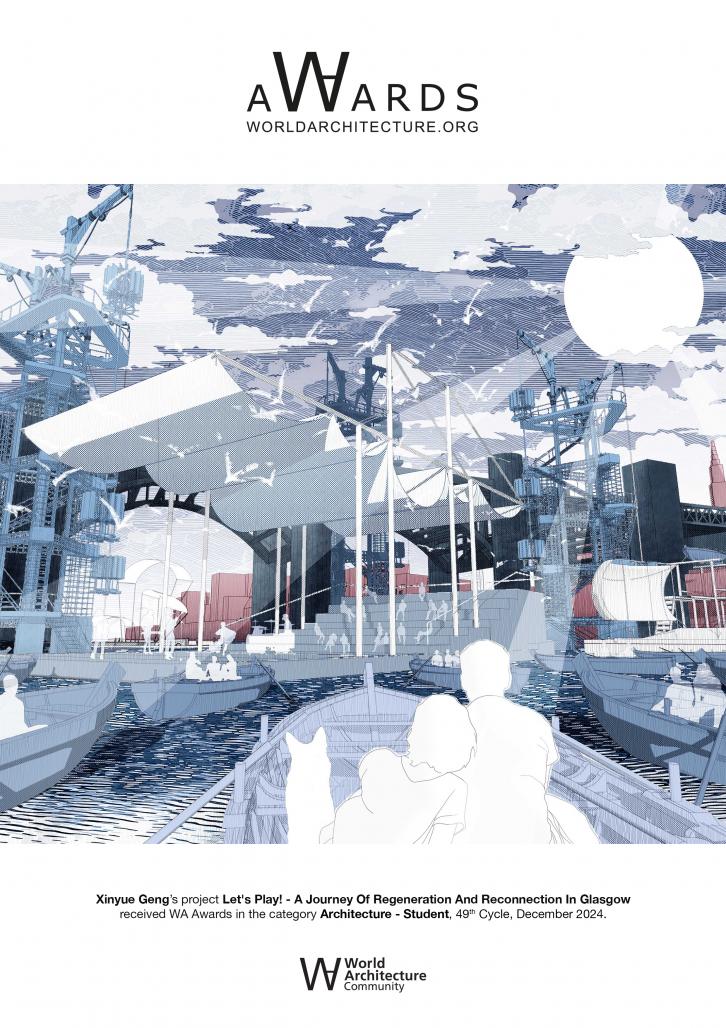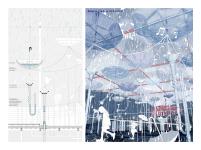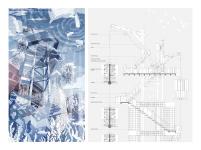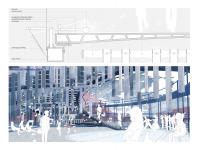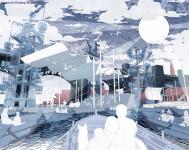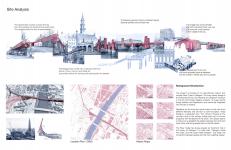Theatre is not necessarily confined to a fixed space. This proposal views the performing art as a potential medium for social and cultural exchange, fostering connections between communities in Glasgow. It aims to link the north and south banks of the River Clyde, revitalizing a series of post-industrial structures that have long been sources of isolation.
The project is located on an abandoned viaduct crossing the River Clyde in Glasgow. Once a busy railway bridge during the industrial era, it has now become an overgrown structure, contributing to urban blight. Its massive presence creates isolation and depression, failing to integrate into the lives of citizens. Residents on the north and south banks of the river exhibit different lifestyles and lack communication, leading to a divided city. The Citizens Theatre, located at the southern end of the viaduct, has also declined with the south side's downturn. This viaduct presents an opportunity to reconnect the north and south banks and revitalize the old theatre. By observing a series of issues in Glasgow, such as the divide between diverse communities, water pollution, underutilized waterfront spaces, disposal of industrial waste, and climate-induced melancholy, we aim to design interactive spatial installations that can have a positive impact.
Glasgow is renowned for its street art, a unique form of interaction, experience, and expression. Can we activate this area through street art while providing special stages for artists? This project aims to preserve and protect Glasgow's rich local heritage through deeper community participation. It features a cluster of separate performance structures and a unifying walkway on the viaduct, attracting people back to this post-industrial space. Though no specific function is defined, it holds great potential for street artists. The rainy season in Glasgow always makes people feel low, why don't we sing in the rain together. The Rain Amphitheatre will collect rainwater and turn a boring rainy day into a concert full of fun through its special musical instrument pipe style echo system. The structure of the observation tower draws inspiration from the ubiquitous cranes of the British shipbuilding industry. As people turn the "lifting device," it filters out trash from the river, while aquatic plants and animals attached to the hollow tower structure gradually become part of the landscape. Inspired by the marimba, the staircase features a unique mechanical linkage made from industrial waste metal. As people walk on it, the heavy industrial history transforms into a melody. The floating theater on the water serves as a carnival of Glasgow's river culture, connecting the River Clyde with the lives of its citizens, encouraging people to engage with the water, and bringing joy and vitality to the waterfront.
The project transforms a neglected urban space into a welcoming area for artists to showcase their work and invites visitors to enjoy and interact. Art here blurs the boundaries between communities, the two banks of the River Clyde, and the past and present of Glasgow.
2022
Location: Glasgow, United Kingdom
Site Area: 13,600 m²
Context: historic viaduct spanning the River Clyde
Functions: public space, amphitheater, outlook tower, walking trails and greenery
Designer: Xinyue Geng
Instructor: John Barr
Let's Play! - A Journey Of Regeneration And Reconnection In Glasgow by Xinyue Geng in United Kingdom won the WA Award Cycle 49. Please find below the WA Award poster for this project.

Downloaded 0 times.
